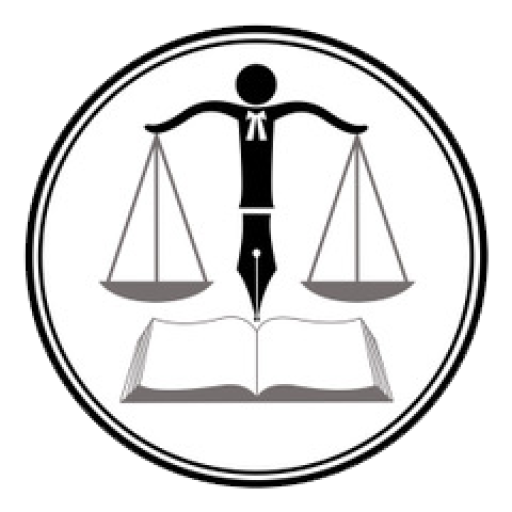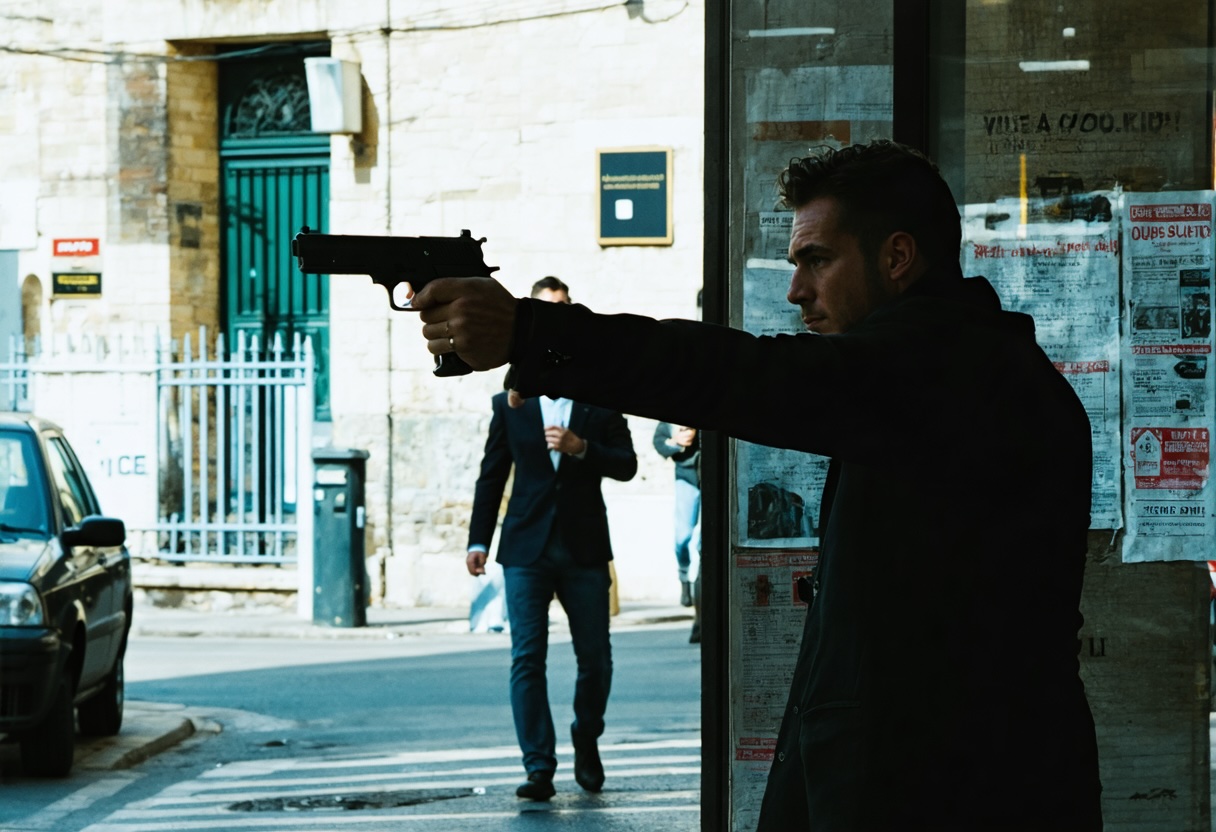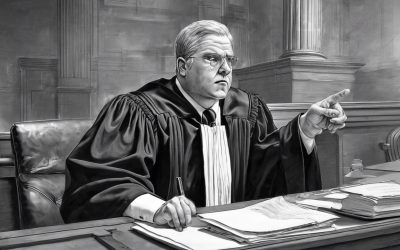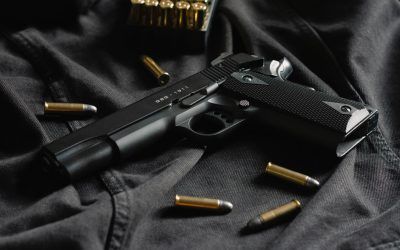This week’s top three summaries: R v Meier, 2025 MBCA 74: #gun #video circumstantial, R v DL, 2025 SKCA 498: #excessive intervention, R v Moore, 2025 PECA 589: cross on #discreditable
R v Meier, 2025 MBCA 74
[August 18, 2025] Circumstantial Evidence: Video Recording without Details [Reasons by Anne Turner J.A. with Holly Beard and Marc Monnin JJ.A. concurring]
AUTHOR’S NOTE: This case represents a rare instance where an acquittal at trial was upheld on appeal due to the insufficiency of video-recorded evidence. The accused was seen on surveillance video outside a casino, pointing and apparently racking what looked like a firearm at an unidentified couple who neither came forward nor testified. Although a firearm was later recovered along the path of a fleeing vehicle in which the accused was arrested, the Crown could not establish that it had been in his possession: the gun was never seen being discarded from the vehicle, and no forensic evidence connected it to him.
Relying on R. v. Villaroman, the trial judge held that the circumstantial evidence did not exclude other reasonable possibilities—specifically, that the object in the video might not have been a firearm, and that the recovered weapon may not have been possessed by the accused. The Crown appealed, arguing that the trial judge erred in applying the reasonable doubt standard. However, the appellate court dismissed the appeal, finding no error: the trial judge had not engaged in a piecemeal analysis but properly applied the Villaroman framework.
R v DL, 2025 SKCA 78
[August 21, 2025] Excessive Judicial Intervention: Volume of Questions and Use in Reasons [Reasons by Drennan J.A. with Kalmakoff and Kilback JJ.A. concurring]
AUTHOR’S NOTE: This decision provides a useful overview of the principles governing excessive judicial intervention. The appellate court found that the trial judge had crossed the line from neutral arbiter into the arena between the parties. This was demonstrated by the sheer volume of questions (59) put to the accused and the way in which the judge relied on the resulting answers to reject the accused’s testimony on credibility grounds. The intervention undermined the fairness of the trial, warranting appellate correction.
I. INTRODUCTION
[1] D.L. was convicted by a Provincial Court judge of one summary conviction count of sexual assault, contrary to s. 271 of the Criminal Code. He was sentenced to a term of imprisonment of 12 months, followed by 12 months probation.
[4] As I will now explain, I agree with D.L. that the summary conviction appeal judge erred in concluding that the trial judge’s questioning of him did not undermine trial fairness. On that basis, I would grant his request for leave to appeal, allow his appeal, quash his conviction, and order a new trial. It is therefore not necessary to address the other grounds of appeal respecting conviction or the sentence appeal.
II. BACKGROUND
[6] D.L. was charged with sexually assaulting his adult niece. The events giving rise to the charge occurred at D.L.’s home on November 28, 2020. D.L. was 53 years of age at the time. The complainant was 27 years old.
[7] D.L. testified that he had hired the complainant to assist him with home repairs…
[10] The complainant testified that she recalled drinking eight cans of beer, three to four cans of Twisted Tea, and a glass of wine by 11:30 p.m. D.L testified that the two drank all 24 cans of beer, each drank a half bottle of wine, and then had four shots of rum. D.L. and the complainant both gave evidence that each of them was intoxicated.
[11] The complainant had called her boyfriend at some point to pick her and her son up. That did not occur. Eventually, D.L. offered her his bedroom, where her son had been during the day with his cell phone.
[13] The complainant’s evidence was that while asleep during that night, she awakened briefly to find D.L. overtop of her, six inches from her face. She said he was naked, as was she. She admitted in her testimony that it was very dark, but thought the person atop of her had to be D.L. From this evidence, it was unclear if the complainant recalled being in the hide-a-bed when this occurred. She then testified that she woke in the early morning hours of November 29, 2020, to find D.L., who was in a spooning position beside her, rubbing his penis against her bare buttocks while stroking his penis and moaning. She said she did not directly observe him doing so but felt that he was. She was naked and could not recall getting in the hide-a-bed or removing her clothes. She said she was stunned and lay there for about ten minutes before getting up. She found her clothing near the hide-a-bed as there was enough light to do so. Her clothing, however, was drenched in urine. Despite this, she put her clothing back on, got her son from the bedroom and they left D.L.’s home.
[14] According to the complainant’s testimony, in the hours thereafter, she had a text message exchange with D.L., in which he inquired if everything was okay as she had left. The complainant told him the reasons why she departed. D.L.’s response was that he did not recall this and had no memory of anything.
[15] D.L. testified that he did not know that the complainant was in the hide-a-bed and denied being on top of her, spooning her, or touching her buttocks with his penis. He also said his shoulder injuries combined with his erectile dysfunction made the complainant’s assertions physically impossible.
[16] As will be detailed further, the trial judge concluded the Crown had proven beyond a reasonable doubt that D.L. had sexually assaulted the complainant…
III. ISSUES AND STANDARD OF REVIEW
[17]…This allegation raises a question of law, reviewable on a correctness standard (R v John, 2023 SKCA 116 at para 5, 431 CCC (3d) 309, citing R v Schmaltz, 2015 ABCA 4 at para 13, 320 CCC (3d) 159; R v Shepherd, 2009 SCC 35 at para 20, [2009] 2 SCR 527).
IV. ANALYSIS
A. Trial fairness: the legal principles
[18] In general terms, trial judges are to listen to the evidence and determine the issues raised by the parties. They “must not take on, or risk being perceived to have taken on, an adversarial or even quasi-adversarial role” (John at para 13, citing R v Brouillard, [1985] 1 SCR 39 at 44, quoting from Jones v National Coal Board, [1957] 2 QB 55 (CA) at 63; R v Huang, 2013 ONCA 240 at para 33, 115 OR (3d) 596).
[19] It follows, as discussed by McCreary J.A. in John, that a trial judge must exercise their trial management powers with care, and should only question witnesses where necessary for the purposes of clarification, resolution of misunderstandings, and correction of the conduct of counsel. In doing so, a trial judge should avoid embarking on an independent investigation into the facts, exploring inconsistencies in witness testimony, or otherwise “enter[ing] the fray”:
[14] … trial judges are responsible for the conduct of the trial: Brouillardat 44–45; and R v Murray, 2017 ONCA 393 at para 91, 347 CCC (3d) 529 [Murray]. A trial judge may, and sometimes must, intervene to clarify an unclear answer, to resolve a misunderstanding of the testimony, to correct inappropriate conduct by counsel or witnesses, or to otherwise ensure a fair trial: Brouillard at 45; R v Switzer, 2014 ABCA 129 at para 13, 310 CCC (3d) 301; R v Pompeo, 2014 BCCA 317 at para 80, 313 CCC (3d) 539 [Pompeo]; and Murray at para 92. However, in doing so, a trial judge must exercise their trial management powers carefully: R v Samaniego, 2022 SCC 9 at para 22, 412 CCC (3d) 7. They must not undermine the functions of counsel or disrupt counsels’ trial strategies. The trial judge must not descend into the arena or enter the fray: R v Oracz, 2011 ABCA 341 at para 7 [Oracz]. Although a trial is a search for the truth, the Canadian judicial system does not permit a judge to become an independent investigator who seeks out the facts: R.D.S. at para 15. That task should be left to the parties to tender the evidence, conduct the examinations and cross-examinations of the witnesses, and advance their legal and factual arguments: Oracz at para 7; and it is counsel’s job, not the trial judge’s, to explore inconsistencies in a witness’s testimony: Huang at para 33. In particular, a judge must be very cautious in interfering with the presentation of the defence case. The accused has a constitutional right to make full answer and defence, which involves choosing the defence advanced: see Swain at 972.
[20] As to when a trial judge’s questioning crosses the line from clarification or correction to something more, “[t]he volume and nature of a judge’s questions can lead to the perception that the trial judge has taken a side, interfere with the ability of counsel to present their case, impede accused persons in providing their testimony, and, in the case of a jury trial, invite a jury to disbelieve a witness” (R v Dirksen, 2021 SKCA 6 at para 51, 398 CCC (3d) 411, citing Brouillard and Schmaltz). A trial judge’s attempts to achieve clarification “should not materially affect the evidence that is given” (John at para 45).[Emphasis by PJM]
[21] To that end, a judge must not intervene “in a manner that undermines the function of counsel and that disrupts or destroys counsel’s strategy” (R v Wilde, 2022 SKCA 74 at para 52, 416 CCC (3d) 1, quoting R v Switzer, 2014 ABCA 129 at para 13, 310 CCC (3d) 301; see also Schmaltz at para 19; Brouillard at 44–47). The intervention should further not be seen to give the impression that a trial judge is supplementing the Crown’s case (Wilde at para 55; see also R v Colling, 2017 ABCA 286 at para 39, 356 CCC (3d) 417). “[T]he dangers of unfairness, or of creating an appearance of unfairness, are heightened when judges embark upon their own questioning of an accused who has given evidence to the satisfaction of his or her counsel and of the Crown” (R v A.W. (1994), 94 CCC (3d) 441 (WL) (Ont CA) at para 18, Brooke J.A. dissenting, but not on this point, reversed [1995] 4 SCR 51, for the reasons of Brooke J.A.).
[22] The appellate inquiry when considering whether a trial judge’s interjections impacted trial unfairness is contextual. It requires assessing a trial judge’s interventions cumulatively, with a view to their perceived or actual impact on trial fairness (R v Murray, 2017 ONCA 393 at para 96, 347 CCC (3d) 529, citing R v Hamilton, 2011 ONCA 399 at para 32, 271 CCC (3d) 208; andR v Stucky, 2009 ONCA 151 at para 72, 240 CCC (3d) 141; see also R v Khan, 2001 SCC 86 at para 77, [2001] 3 SCR 823). “The ultimate question for an appeal court is not whether the judge at trial was, in fact, not impartial or whether the accused was, in fact, prejudiced by the trial judge’s interventions; rather, it is whether a reasonably minded person who had been present for the trial throughout would consider that the accused had not had a fair trial” (John at para 15, citing Stucky at para 68, quoting R v Valley (1986), 26 CCC (3d) 207 (Ont CA) at 232; and Murray at para 96).
[25] As I indicated at the outset, and will now explain, D.L. has persuaded me that the trial judge’s questions cumulatively gave rise to a reasonable perception that trial fairness was compromised. This is so for several reasons.
[26] First, I observe that following completion of D.L.’s examination in chief and crossexamination, the trial judge asked him 59 questions, spanning 11 pages of the trial transcript. While volume is not determinative in evaluating the impact of such interjections, it can, coupled with the nature of the inquiries, create a perception of unfairness (as per Dirksen). It is worth mentioning at this point that, in Brouillard, the Supreme Court overturned a conviction where an accused’s testimony was interrupted by a judge over 60 times between his examination in chief and crossexamination and “clearly gave the impression of assisting the Crown” (at 48). In D.L.’s case, as will be further explained, the sheer quantity, timing, and content of the interjections by the trial judge collectively give rise to a perception that the trial judge was embarking on inquiries designed to supplement or support the Crown’s case.
[27]…The questions, cumulatively, gave rise to a strong appearance of the trial judge having entered the fray in an adversarial way, and having conducted an independent investigation into the facts.
[28] Several portions of the record illustrate this point. The questioning began with the trial judge asking D.L. to “clarify” photos of his home that had been entered into evidence by the defence. D.L. testified that those photos had been taken during the day. While the trial judge’s initial questions could be seen as innocuous and centered on understanding the layout of the home – they shifted to a repeated focus on the curtains in the living room and home, and whether light could be seen shining through the same, as evidenced from this excerpt:
Q So is that what I’m looking at? Are those drapes?
A Yes.
Q And so is there a window behind there?
A Yes, there is.
Q Okay. And the photo looks like it’s taken during the day?
A Yes.
Q Okay, so it’s taken during the day. So is that – are these those blackout curtains you were testifying to?
A Yes. They’re from Walmart.
Q Okay. So you’re saying that’s a blackout curtain?
A Yes, it’s – they – they called it a blackout curtain when they – when – when I bought it.
Q Okay.
A Yeah, so –
Q Am I – and maybe it’s the way the photo is, but it looks to me you can see light from behind, or is that just the way the photo is or can you actually see light?
A I – I don’t – I could bring the curtains in, so you see –
Q No, it’s – it’s –
A — like –
Q — more what – what I’m looking at in the picture.
A Yeah. Yeah, at nighttime, yeah, they –
Q No, like, in the daytime.
A In the daytime? Yeah, they – they block out quite a bit of light and –
Q Okay.
A — it keeps the house cool because that’s one of the things too because it’s –
Q Okay.
A — there’s a lot of windows there.
Q So is this what I’m looking at – is that light that appears to be shining through it, or is that just the way the photo was taken?
A I’m – I’m not sure
[29] After delving into a series of other questions as to the photos, the trial judge returned again to the topic of window coverings and light in the living room:
[30] I pause here to observe that D.L. had been clear and consistent about the living room being completely dark at the time of the incident in his examination in chief and while being crossexamined by Crown counsel – even when pressed on the point during cross-examination. The complainant had also testified to the living room being pitch black at the time.
[31] The trial judge then proceeded to question D.L. about certain gym and musical equipment shown in the photos. This line of inquiry had not been raised in D.L.’s examination in chief, nor in cross-examination…
[32] As is evident from the trial judge’s reasons, the questioning on the gym and musical equipment became relevant to D.L.’s claim that his physical injuries precluded him from laying on his side, or in a spooning position, as alleged by the complainant in her description of the sexual assault. His testimony was that he could not lay on his side because of pain to his shoulders (due to the rotator cuff injuries) and that he slept on his stomach.
[33] Looking at these lines of inquiry through the lens of what a reasonably minded bystander would perceive, the trial judge’s questioning involved multiple attempts to revisit the issue of whether the curtains in fact prevented light from flowing into the room, even when the question had been asked and answered by D.L. several times. This appeared to be driven by the trial judge’s view that D.L.’s account of the room being completely dark at the time of the incident was inconsistent with what the photographs depicted about the light that could be seen flowing through the curtains. While it is debatable whether there was in fact an inconsistency – the trial judge’s persistence on this point was akin to a cross-examination, as it involved repetitive and looping inquiries on the topic seeking an admission by D.L. that undermined his account (which, as noted, was consistent with that of the complainant) that the living room was pitch black at the time of the incident. Likewise, the trial judge’s inquiry into the setup, location, functionality, and use of the musical and gym equipment went beyond clarification. It introduced a new line of inquiry not explored by counsel, and one that was focused only on the possibility that D.L. was using said equipment and, therefore, not being truthful in his initial account that he did not due to his injury. It further led, by way of the trial judge’s invitation, to the Crown conducting a new line of crossexamination that elicited additional evidence from D.L. on this point.
[34] Finally, the concerns I have expressed with the trial judge’s questioning are actualized by looking to his decision, where the evidence elicited from his questioning and the subsequent crossexamination by the Crown became key pillars in his reasoning in rejecting D.L.’s evidence and finding him guilty of the offence.
[35] To start, the trial judge found D.L.’s responses respecting the curtains and light in the living room shown in the daytime photos to be inconsistent with his earlier testimony that the living room was pitch black during the incident:
The issue of the blackout blinds. [D.L.], in support of his position that at night the room was pitched black, stated that the curtains in his home were blackout blinds. In the pictures, the curtains appear to be regular curtains where light is flowing through, and [D.L.] confirmed the light flowing through when answering the court’s questions about what the court was seeing in the pictures that had been entered as exhibits.
[36] Next, the trial judge found that D.L. “downplayed” his use of the musical equipment. He also found that “the way the home gym is set up in the room indicates it is being used”. In short, he used D.L.’s testimony respecting his use of the musical and gym equipment in an adverse way when considering his credibility:
[37] Lastly, partly because the trial judge did not believe that D.L. was not using the musical or gym equipment, he also concluded that D.L. was not credible in his account of his physical limitations. He went on to draw the inference that D.L. was capable of lying beside, or “spooning” or being on top of the complainant:
[38] The reasons demonstrate the validity of D.L.’s submission that the questions asked by the trial judge and the responses elicited from D.L. went to the core of D.L.’s account, and were ultimately used by the trial judge to undermine the same – including his testimony regarding the living room’s darkness at the time of the incident, and his physical capabilities…
[39] To conclude on this point, given the quantity, timing and nature of the trial judge’s questioning, the fact that the questioning led to further cross-examination by the Crown on a new line of inquiry, and the subsequent use of evidence elicited from both the trial judge’s questions and those that followed from the Crown – it cannot be said that a reasonably minded person who had been present for the trial throughout would consider D.L. to have had a fair trial…[Emphasis by PJM]
V. REMEDY
[41] In cases where a trial judge has overstepped the judicial function by way of improper interventions, the appearance of trial fairness is compromised, and a new trial is required (John at para 15; R v Pompeo, 2014 BCCA 317 at para 80, 313 CCC (3d) 539). That must be the outcome in D.L.’s case.
[42] I would therefore grant D.L. leave to appeal the Summary Conviction Appeal Decision, allow the appeal, quash his conviction and remit the matter for a new trial in the Provincial Court.






